Avoid the embarrassment of planting an evergreen tree, only to have it die a year later. By knowing what evergreen trees to plant in hardiness zone 9, you can keep your yard looking lush and beautiful.
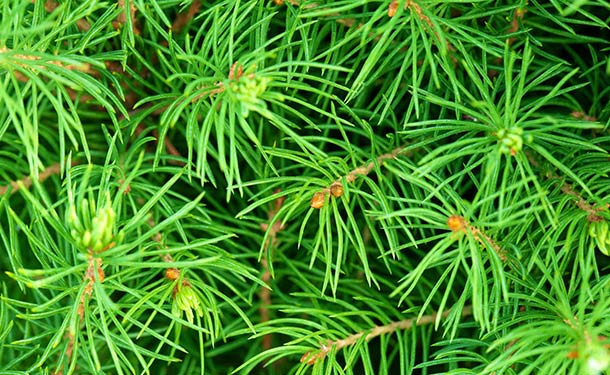
thetreecareguide.com gathered information on evergreen trees that thrive in hardiness zone 9, how to care for them, and some of the cities found in this zone.
Evergreen Trees for Hardiness Zone 9
Tree species have spent multiple millennia evolving and adapting to the conditions of the regions they grow in. The following trees are hardy for zones 9a and 9b:
Pitch Pine Tree (Pinus rigida) – This evergreen grows up to 80 feet, does well in a mixture of sun and shade, is fast-growing, fire-resistant, and can be used as a hedge or privacy tree.
Loblolly Pine Tree (Pinus taeda) – Also known as North Carolina Pine and Arkansas Pine. This pine grows up to 110 feet, does well in a mixture of sun and shade, is fast-growing, and can be used as a shade or privacy tree.
Shortleaf Pine Tree (Pinus echinata) – This pine with short needles is also known as Southern Yellow Pine and Shortstraw Pine. This species reaches an average height of 100 feet, does well in a mixture of sun and shade, is drought tolerant, very fast-growing, and can be used as a shade or privacy tree.
Spruce Pine Tree (Pinus glabra) – Also known as Cedar Pine and Walter Pine (this is the species more commonly used as Christmas trees). This species can reach heights of 90 to 100 feet but is usually seen at 30 to 50 feet. Spruce pines do well in a mixture of sun and shade, is drought tolerant, is slow-growing, and can be used as large scale hedges and privacy. Other pine trees that thrive in zone 9 include:
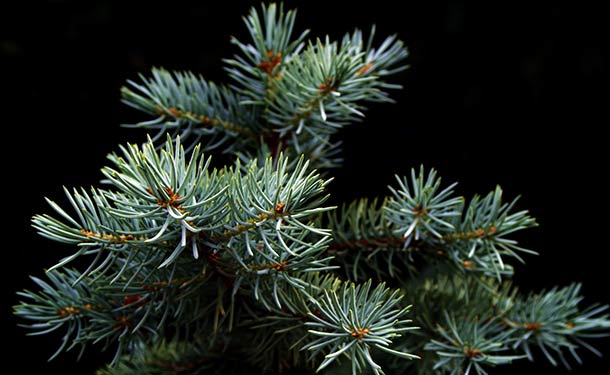
- Virginia Pine Tree (Pinus virginiana)
- Japanese Black Pine Tree (Pinus thunbergii)
- White Pine Tree (Pinus strobus)
Regal Privet Hedge (Ligustrum obtusifolium) – While categorized as a shrub, the privet hedge can grow independently or used in a row for privacy. Once mature, this shrub can be pruned into a formal hedge or topiary shapes. Privet hedges reach heights of 12 to 15 feet and do well in a mixture of sun and shade or full sun.
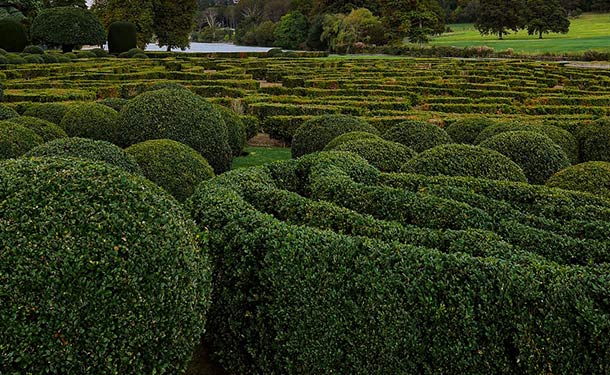
Deodar Cedar Trees (Cedrus deodara) – This sought out species matures with attractive gray-green foliage and graceful, arching branches. This drought-resistant cedar reaches heights of 40 to 70 feet at maturity and can attain a spread of 20 to 40 feet (in a loose pyramid form). This cedar does well in full sun and thrives in wide-open areas shielded from constant wind. More cedars that thrive in zone 9 include:
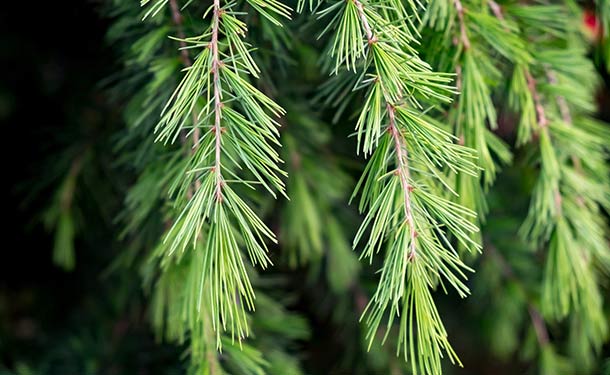
- Coastal White Cedar Tree (Chamaecyparis thyoides)
- Top Point Cedar Tree (Chamaecyparis thyoides)
- Dwarf Japanese Cedar Tree (Cryptomeria japonica)
Leyland Cypress Tree (Cupressus × leylandii) – This fast-growing evergreen tree is one of the most popular choices for hedges, windbreaks, privacy screens, and sometimes Christmas trees. This species reaches heights of 60 to 70 feet with a spread of 15 t0 25 feet at maturity. The tree does well in partial shade to full sun and can tolerate occasional drought.
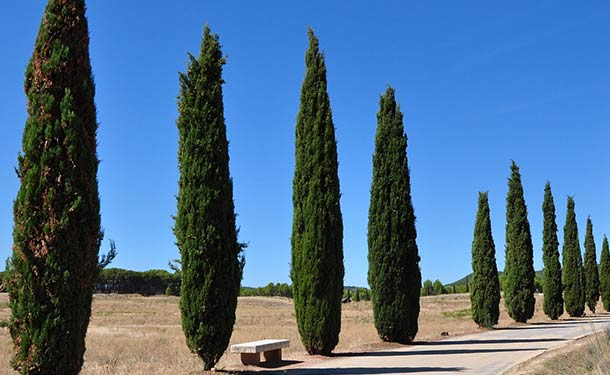
Lemon Cypress Tree (Cupressus macrocarpa) – Also known as goldcrest, this variety of Monterey cypress grows to about 16 feet tall. Its green-yellow needle-like foliage, conical growth, and fresh citrus smell make it highly desired for landscapes and yards. This species needs full sun and moist soil. Other cypress species that grow in zone 9 include:
- Italian Cypress Tree (Cupressus sempervirens)
- Bald Cypress Tree (Taxodium distichum)
- Blue Pyramid Cypress Tree (Cupressus arizonica)
- Murray Cypress Tree (Cupressocyparis leylandii Murray)
Eastern Juniper / Redcedar Tree (Juniperus virginiana) – This member of the Cypress family reaches heights of 40 to 50 feet tall and is long-lived, with the potential to surpass 900 years. The tree offers excellent shelter for birds and small animals during winter and provides excellent color in the landscape during fall and winter months. This species thrives in full sun and is extremely drought tolerant. Also, consider the following juniper varieties for zone 9:
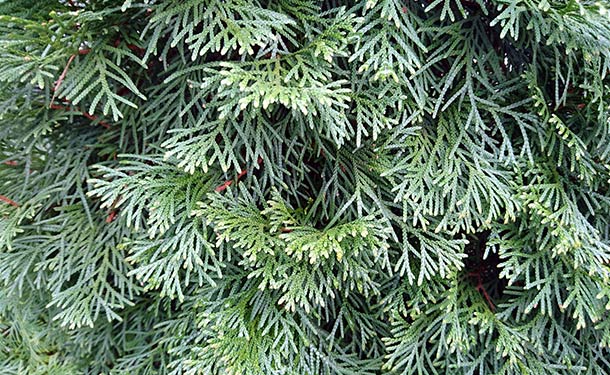
- Hollywood Juniper Tree (Juniperus chinensis)
- Spartan Juniper Tree (Juniperus ‘Spartan’)
- Wichita Blue Juniper Tree (Juniperus scopulorum)
Mexican Fan Palm Tree (Washingtonia robusta) – When planted in large landscapes or wide-open areas, this tree can reach heights of 80 to 100 feet. This palm tree is somewhat drought tolerant and thrives in full sun to partial shade. The following palm tree varieties also thrive in zone 9:
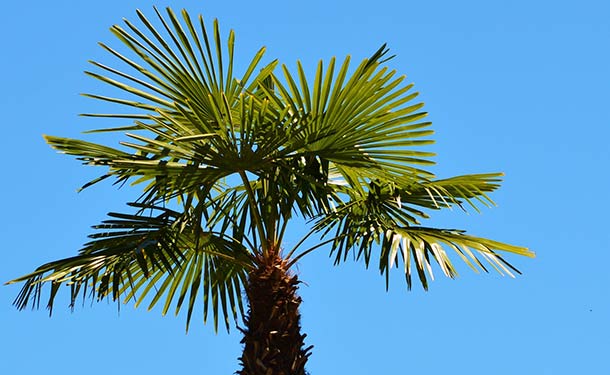
- Sylvester Palm Tree (Phoenix sylvestris)
- Pygmy Date Palm Tree (Phoenix roebelenii)
- Broadleaf Lady Palm Tree (Rhapis Excelsa)
Note: All of the tree species mentioned above require well-drained, moist soil to grow and thrive. In some zone 9 regions, drought conditions are frequent, and watering schedules should be increased to include frequent deep waterings.
If you planted one of the above species and suspect an evergreen tree disease, or notice signs that are concerning, consult a local arborist for guidance.
Hardiness Zone 9
A hardiness zone is defined as a geographic area encompassing a range of climatic/temperature conditions relevant to that area’s plant growth and survival.
Hardiness zone 9 or ‘zone 9’ is divided into two classifications. Zone 9a has an annual extreme low temperature of 25°F and zone 9b which has an annual extreme low temperature of 30°F. Some of the cities found in zone 9 include:
- Baton Rouge, LA
- Biloxi, MS
- Corpus Christi, TX
- Houston, TX
- Las Vegas, NV
- Los Angeles, CA
- New Orleans, LA
- Orlando, FL
- Phoenix, AZ
- Portland, OR
- San Antonio, TX
- San Diego, CA
- Tucson, AZ
Dry and arid, humid, and muggy, the variety of climates included in zone 9 is remarkable. However, classification for the hardiness zone map and a tree’s ability to thrive is determined by the annual extreme low temperature.
If you are not in a similar region, to find your locales hardiness zone, visit the USDA’s plant hardiness zone map at planthardiness.ars.usda.gov/PHZMWeb/Default.aspx
Evergreens That Thrive in Zone 9
In this article, you discovered several of the evergreen tree species that thrive in hardiness zone 9, their needs for optimal growth, and how to find your city on the hardiness zone map.
By planting trees appropriate for your hardiness zone, you are giving them a better chance of growing and thriving on your property.
Avoid the embarrassment of planting trees that can’t tolerate your hardiness zone, they will likely die within one or two seasons of being planted.
Sources:
newswire.caes.uga.edu/story.html?storyid=4006&story=They%27re-inexpensive-and-they-grow-quickly.
projects.ncsu.edu/project/dendrology/index/plantae/vascular/seedplants/gymnosperms/conifers/pine/pinus/australes/pitch/rigida.html
hort.ufl.edu/database/documents/pdf/tree_fact_sheets/pinglaa.pdf
botgard.ucla.edu/wp-content/uploads/sites/120/2019/03/StreetPlants_Washingtonia_robusta.pdf
plants.ces.ncsu.edu/plants/juniperus-virginiana/